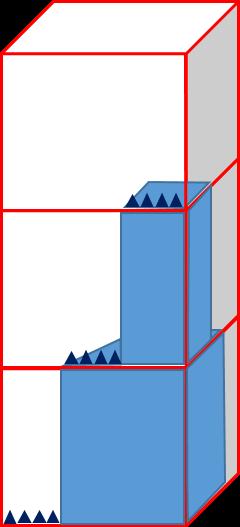Measuring the impact of a city's buildings on the weather

Mauree decided to model a group of buildings that represent the city of Basel. © Alain Herzog/EPFL
A new model developed at EPFL can help engineers and meteorologists quickly calculate the effect that city buildings have on local weather patterns. A blinds manufacturer is already interested in it, and climate scientists could be next.
The shape of city buildings, how they are arranged, and the heat they generate all affect the local weather. Being able to model the complicated processes involved doesn’t only help meteorologists improve their city-weather forecasts, but also enables engineers improve the energy efficiency of the buildings they design.
The programs typically used to model such phenomena are onerous, time-consuming, and expensive to run. However, a study carried out in 2016 by EPFL’s CRYOS laboratory showed the importance, as well as the complexity, of these calculations. At EPFL’s Solar Energy and Building Physics Laboratory (LESO-PB), postdoc Dasaraden Mauree successfully simplified the equations to make them easier for engineers to use. He ran data from the city of Basel through his streamlined model, obtaining results and trends similar to those generated by a theoretical model as well as a more sophisticated model called LES. This study, with Mauree as the lead author, was published in Frontiers in Earth Science.
“Buildings are often built without taking into account the specific features of a city’s weather patterns or the influence that city buildings can have on the weather. Our goal was to develop a program that combines modern weather forecasting models with models that measure the effect of heat released by buildings,” Mauree said.

Like Lego bricks
Instead of modeling the entire city of Basel, Mauree decided to model a group of buildings that can represent it. He had to calculate the construction density of the neighborhood he chose as well as the average height, length and width of its buildings. That gave him a “standard building” to use in his calculations. He then divided this standard building into “bricks” akin to floors, and stacked these bricks on top of each other like Legos: “Dividing buildings into bricks is key to understanding the weather processes that take place within a city, because these processes vary with building height,” Mauree said.
Once his building was divided into bricks, Mauree then incorporated meteorological data for Basel (such as wind speed and direction, temperature and humidity) into his model. The resulting algorithm let him generate precise estimates of the weather phenomena occurring at each brick. Engineers could use these types of calculations, for example, to optimize a building’s energy consumption by choosing the best façade for each floor. “On the ground floor, you generally don’t have much wind but you could have a lot of humidity, especially if there are plants around. But wind becomes more prominent on higher floors, leading to greater energy loss. Convection currents can become particularly strong on hot days as the ground and building surfaces heat up. These currents are caused when hot air, which has a lower density, flows upward, and cooler air, which has a higher density, flows downward. As another example, engineers calculating a new building’s energy needs should account for the low level of sunlight penetration in densely-packed cities.”
Data for meteorologists, manufacturers and climatologists alike
According to Mauree, engineers won’t be the only ones to benefit from his new method. “Our model is designed to better represent building surfaces and more accurately calculate wind and moisture flow within a city. That naturally makes it useful for meteorologists. But a blinds manufacturer is also interested in our approach, because it can provide good estimates of wind speed and direction near building façades,” Mauree said. In addition, his model can predict phenomena occurring near the ground – meaning climate scientists could use it to simulate large-scale weather processes, since current methods don’t offer the same level of precision.
References
An open platform
Two more articles on this subject are set to be published this year. But Mauree is already looking at the next step: developing an open platform where anyone can enter basic data about a neighborhood and obtain a reliable model of its air currents and the effect its buildings have on the weather. “We want to give engineers and meteorologists fast, reliable data for their building designs and weather forecasts, without requiring them to write code or use a computer program,” he says.
Mauree also plans to enhance his model, coupling it with the CitySim software developed at EPFL in order to more accurately calculate building energy usage and outdoor thermal comfort. “We are also collecting data under the MoTUS [Measurement of Turbulence in an Urban Setup] campaign that will let us improve our Canopy Interface Model, which aims to better simulate the different weather processes in urban areas,” Mauree said. He sees potential for his research in not only reducing building energy consumption, but also improving the overall design of urban spaces.